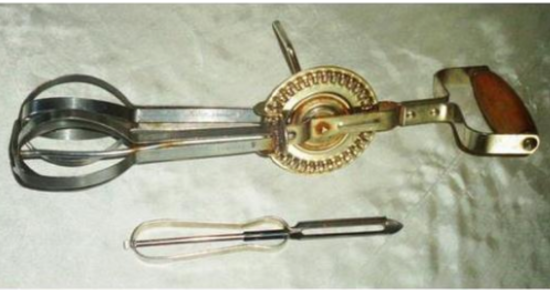In 1856, Ralph Collier, a tinner from Baltimore, Maryland, patented the mixer with rotating parts. Shortly after, in 1857, E.P. Griffith patented the whisk in England. In 1859, J.F. and E.P. Monroe patented another hand-turned rotary egg beater in the US.
The Dover Stamping Company purchased one of the first egg beater patents, leading to the creation of the iconic American brand, Dover egg beaters. In February 1929, the term “Dover beater” was widely used, as shown in a recipe from the Gazette newspaper of Cedar Rapids, IA, for “Hur-Mon Bavarian Cream,” a delicious dessert made with gelatin, whipped cream, banana, and ginger ale.
The Monroe pattern was also produced in the United Kingdom. In 1870, Turner Williams from Providence, Rhode Island, created a different Dover egg beater design. In 1884, Willis Johnson from Cincinnati, Ohio, made advancements to the egg beater.
The initial mixer with an electric motor is believed to have been created by Rufus Eastman, an American, in 1885. The Hobart Manufacturing Company, a pioneer in producing large commercial mixers, claims that a new model introduced in 1914 greatly contributed to their mixer business.
The Hobart KitchenAid and Sunbeam Mixmaster, which were first made in 1910, were two of the earliest electric mixer brands in the United States. Electric mixers were not commonly used in households before the 1920s, but they became more popular for home use during that time.
Herbert Johnston, an engineer at the Hobart Manufacturing Company, created an electric standing mixer in 1908. He got the idea after watching a baker mix bread dough using a metal spoon. This inspired him to experiment with a mechanical version.
In 1915, his mixer with a capacity of 20 gallons (80 L) became the norm in many big bakeries. Four years later, Hobart launched the Kitchen Aid Food Preparer (stand mixer) for household use.
